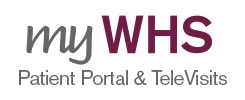What Is the WATCHMAN Device Procedure?
The WATCHMAN device procedure is a minimally invasive procedure for patients with atrial fibrillation (AFib). Roughly the size of a quarter, the WATCHMAN device is a type of AFib treatment that is performed to reduce the risk of strokes.
Who Would Benefit From the WATCHMAN Implant?
Patients with AFib who want to reduce their stroke risk without the use of blood thinners can benefit from the WATCHMAN device procedure.
What Is AFib?
AFib is the shorthand medical term for an irregular heart rate when the heart is unable to pump blood normally, and in some cases, the blood can pool in the left atrial appendage. AFib can lead to heart failure. Blood cells can stick together and become clots. If clots leave the left atrial appendage, they can cause a stroke. In people with AFib, more than 90% of stroke-causing clots are formed in the left atrial appendage.
Blood thinners can be an effective AFib treatment for some people, but for others, blood thinners increase their risk of bleeding. For many people, the risk of bleeding and the risk of stroke are equally distressing. One study found that more than 80% of patients would be willing to try an alternative to blood thinners to lower their risk of stroke.
How Is the WATCHMAN Placed?
The WATCHMAN placement is a one-time procedure, implanted similarly to a stent. The WATCHMAN device fits inside the left atrial appendage, effectively closing it off and preventing blood clots from escaping into the bloodstream. The device is small and light, and it cannot be seen or felt outside your body.
During a WATCHMAN device procedure, your cardiac surgeon will make a small incision in your thigh, inserts a small catheter into your artery and then guides the device to the heart. The procedure usually takes about an hour.
After the procedure, you’ll stay overnight in the hospital and be placed on blood thinners for 45 days. After those 45 days, most patients are able to stop taking blood thinners for good, reducing their risk of bleeding and stroke.
Our cardiology team will work with you to find the best treatment option for you. Find a location to receive expert cardiac care close to your home.


